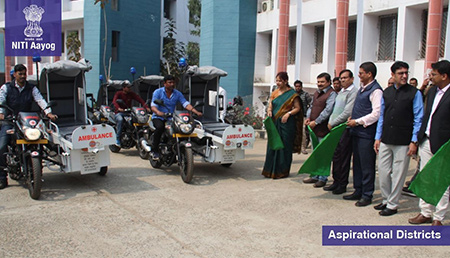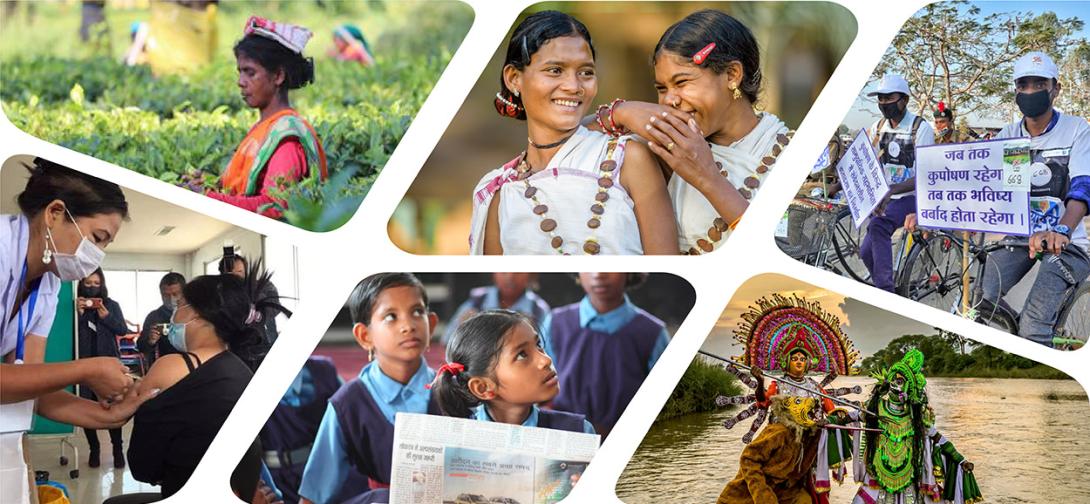Leveraging CSR to Complement India’s Covid-19 Mitigation Strategy
As India enters its fifth week of nationwide lockdown to suppress the transmission of the novel coronavirus and simultaneously augment its public healthcare capacity, the time is ripe for corporations to incisively deploy their corporate social responsibility (CSR) funds in this fight against COVID-19 and complement the efforts of the Central and State governments in hammering down the spread of the virus. The Ministry of Corporate Affairs (MCA) has already declared various activities related to COVID-19, such as promotion of healthcare, sanitation and disaster management, as an eligible CSR activity. Many have pontificated about the role that CSR funds can play in these testing times but much of the discourse has stemmed from the narrow notion of donating them to designated funds mentioned in Schedule VII of the Companies Act, 2013, which now also includes the PM CARES fund. Amidst this conversation, the original vision of unlocking CSR’s potential as a tool to strengthen the social responsibility of businesses while capitalising on their physical presence in distributed pockets of the country has been lost in translation.
From voluntary to legally-mandated CSR
In the early literature on CSR, the principle of voluntarism was predominant as the traditional idea of a corporation stemmed from the belief that a company's primary motive is to create maximum shareholder value. This global consensus, however, started going through a period of churn with the advent of globalisation since the late 1980s and the emergence of multi-national corporations (MNCs). It was no longer feasible for governments to bank upon the inherent goodness of large MNCs to give back to the society when their primary motive for setting factories in other countries was guided by purely economic reasons - cheap labour, access to raw materials and lower legal compliance.
India responded to this changing landscape by issuing guidelines on voluntary CSR in 2009, updating them in 2011 and legally mandating it for companies meeting the threshold criteria in 2014. Ever since the Companies Act of 2013 was enacted, India assumed a pioneering role in channelizing CSR funds in alignment with national priorities, as enumerated under Schedule VII of the 2013 Act. The entries in the Schedule are to be interpreted liberally, thereby providing a wide scope of activities to be covered under it. The philosophy that has guided India’s approach towards CSR is that corporations are social organisms with deep roots in the society and their physical presence in various districts of the country, including in under-developed and Adivasi-dominated ones, puts them in a unique position to complement the efforts of the state machinery in delivery of public goods. This preference for local area is reflected in the first proviso to sub-section (5) of Section 135 of the 2013 Act. In times of emergency, such as the present COVID-19 pandemic, the deployment of CSR funds becomes more crucial to rapidly fill critical gaps that overstretched state capacities may find difficult to deliver on. To achieve this aim, companies need to work in partnership with the district administration in their local areas, identify the areas where they can assist and synergise their resources with that of the government.
The Report of the High-Level Committee on CSR (2018 HLC Report), constituted by MCA in 2018, highlighted that delays in project identification and implementation, owing to lack of prior expertise in the companies, were major reasons for under-spending of CSR funds. Therefore, it is also essential for companies to identify some non-governmental organisations (NGOs) operating in their local area which can assist them in not only formulating projects, as per the local needs, but also in implementing them.
NITI Aayog maintains a comprehensive directory of such organisations on its NGO Darpan portal where more than 91,000 NGOs have already registered and the CSR teams of companies can avail this information to connect with them. The Federation of Indian Chambers of Commerce and Industry (FICCI) Socio-Economic Development Foundation of India, which has been promoting public-private partnerships in various social development projects, also provides a good network for companies to tap into. Companies must also look at capitalising on the wealth of information and networking opportunities provided by sustainability platforms like Goodera and CSRBox which are using data analytics to not only identify suitable projects but also monitor their implementation and assess their social impact.
In this backdrop, the Aspirational Districts Programme, launched by the Prime Minster in January 2018 and anchored by NITI Aayog, is a persuasive case study to show how the synergy of these three stakeholders – the district administration, companies and NGOs – can foster more equitable channelization of CSR funds in under-developed pockets which have been historically deprived of them. It also serves as good evidence of the fact that when CSR is discharged with coaction, its impact is amplified.
CSR in Aspirational Districts as a model
The 112 Aspirational Districts covered under the Programme were identified through a composite index of backwardness devised by NITI Aayog and therefore, they represent the most under-developed pockets of India across 26 states and one union territory. While serving as a laboratory of myriad governance reforms aimed at promoting competitive-cooperative federalism, the Programme also seeks to promote collaboration between all stakeholders invested in a District’s development and convergence of funds, including those from state & central welfare schemes, district mineral funds and CSR.
One way of doing this was to encourage Central Public Sector Enterprises (CPSEs) to pump their CSR funds in these 112 Districts. Hence, in December 2018, the Department of Public Enterprise (DPE) issued guidelines for CPSEs to use their CSR funds in a focussed manner towards national priorities. It further advised them to spend up to 60% of their CSR funds in school education and healthcare while giving preference to Aspirational Districts.

In Aspirational District Dumka, bike ambulances were provided by Indian Oil Corporation through its CSR funds for ensuring last-mile delivery of healthcare services
As the 2018 HLC Report pointed out, the provision on local area preference in Section 135 may have had the unintended consequence of increasing the skew of the CSR expenditure across states leading to the more industrialised states like Maharashtra, Karnataka, Andhra Pradesh, Gujarat, Tamil Nadu and Delhi bagging approximately 40% of all CSR funds for the years 2014-15 to 2017-18. The DPE guidelines were intended to straighten these regional imbalances in distribution of CSR funds and the results so far have been encouraging. CPSEs have approved CSR projects worth approximately ₹1348 crores in Aspirational Districts between March 2018 to September 2019. States like Jharkhand, Chhattisgarh and Odisha, which were often starved of CSR funds, have benefitted the most from this state-orchestrated philanthropy. Many of these interventions were made in critical sectors through projects like provision of smart classrooms in schools, upgrading the infrastructure in angandwadis and primary health centres, livelihood programmes et al.
The 2018 HLC Report also emphasised that the culture of being responsible to the society is being gradually imbibed by more and more companies each year. While only 45% of liable companies contributed to CSR expenditure in 2014-15, the number had increased to 71% by 2017-18. As this transition continues, the efforts of the Central Government in nudging them towards spending CSR funds in specific domains and geographies, through soft law instruments like advisories and guidelines, has borne fruit.
CSR as an opportunity
The present COVID-19 pandemic is putting the corporate social responsibility to test. As the economic activity gradually resumes in the coming weeks, companies must strive to use this crisis as an opportunity to expand their CSR footprint. Instead of resorting to easier options of discharging their CSR obligations, like contributing to designated funds, they must first strive to professionalise their CSR teams, forge new partnerships with NGOs and work with the district administrations to deploy their CSR funds in the most effective manner. Contribution to designated funds already receives a small proportion of CSR funds (approximately 5.6%) which shows that it is being used as a last resort measure and not as the habitual way of discharging legal obligations. This statistic will certainly be drastically altered for 2020-2021 as large amount of CSR funds have already been committed to the PM CARES fund. While it is understandable, that given the urgent need for mobilising resources, donations to designated funds is a good option for smaller companies, the larger MNCs must follow the hybrid approach i.e. commit a part of their CSR to the relief/disaster management funds and the rest should be used by them in implementing Covid-19 resilience projects on the ground.
Companies following the hybrid approach are already setting a good example for others to follow. They have proactively lent their support to the Government in manufacturing ventilators, PPE kits and face covers. Defence Public Sector Units are building isolation wards and supplying N95 masks, santisers etc. to our frontline workers. Many private companies have already teamed up with NGOs to provide daily food and rations to the needy during the lockdown period and are doing exceptional work to complement the efforts of the state governments.
In times of crisis, people appreciate the efforts of those who help and will remember the companies which sacrifice their short-term gains in order to value their commitment to social responsibility. MCA’s appeal to companies to go “over-and-above” their legally mandated CSR ceiling of 2% (of average net profit of 3 immediately preceding financial years) must be seen in this backdrop. The Government has made it clear that second phase of the lockdown will coincide with gradual resumption of economic activities. Therefore, companies must utilise this opportunity to leverage their CSR obligations in boosting their social responsibility credentials and provide thrust to the successful blending of the first phase of the lockdown with the second by cushioning this transition through creative deployment of their CSR funds.
*Vishal Tripathi is a Young Professional, NITI Aayog. Views expressed are personal.
 National Portal Of India
National Portal Of India 

